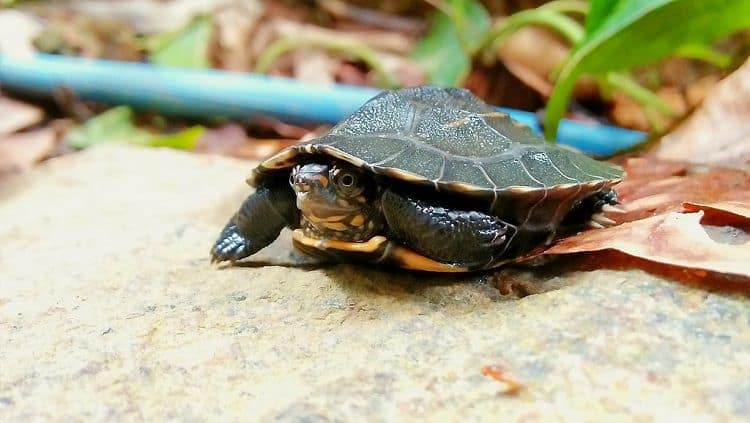Table of Contents
Terrapins, for the most part, are easy to take care of. However, you will need to regularly clean their tanks as these creatures can be messy when eating. When taken care of properly though, terrapins can live for quite a long time (some species in captivity can even live up to 30 years). In saying that, there are times when they require additional care and attention; particularly when unwell.
Those new to terrapins might not be aware of common behaviors and will often have questions relating to things it is doing. Oftentimes, the behaviors exhibited are quite normal, and a bit of research will set the individual’s mind at ease. Nevertheless, there are some behaviors that can and very often do indicate something more serious. This is when some intervention is needed.
might not be aware of common behaviors and will often have questions relating to things it is doing. Oftentimes, the behaviors exhibited are quite normal, and a bit of research will set the individual’s mind at ease. Nevertheless, there are some behaviors that can and very often do indicate something more serious. This is when some intervention is needed.
Why is My Terrapin Floating?
The first thought many terrapin owners have upon seeing their terrapin floating in the water is that it has gas or trapped wind. This could be the case, but it could also mean that the terrapin is extremely sick. It is important to check that the terrapin is actually floating and not simply swimming (or, more aptly, doing the human equivalent of treading water). You can do this by pushing it gently under the water. If the terrapin swims away, then all is good. However, if it just bobs back up to the top, it is likely to be a sign of illness that will need immediate attention.
Unfortunately, respiratory infections are often the cause of floating terrapins. Moreover, these respiratory infections are usually caused by mistakes made in the care of the terrapin. Many new owners make simple mistakes such as not having the water or basking temperature warm enough. Poor diet and a lack of UVB light can also result in illness.
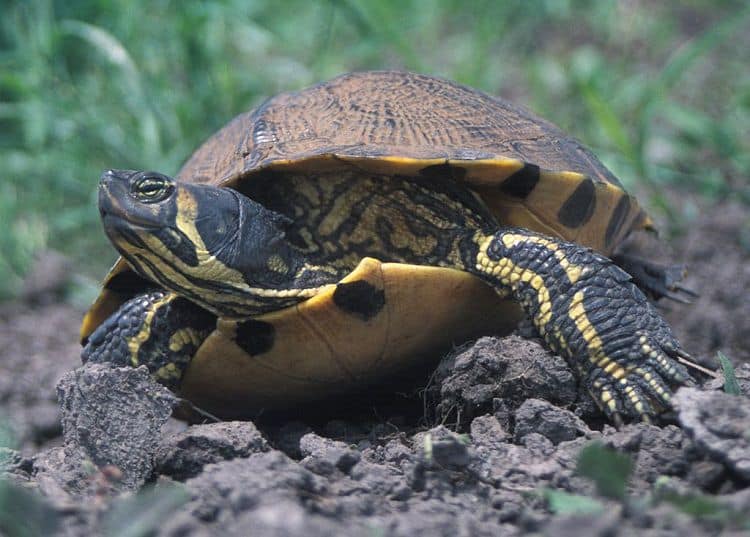
Yellow-Bellied Slider 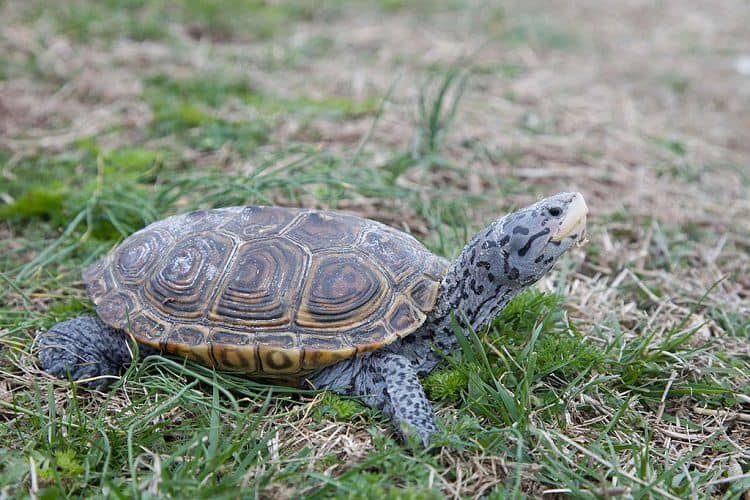
Diamondback Terrapin 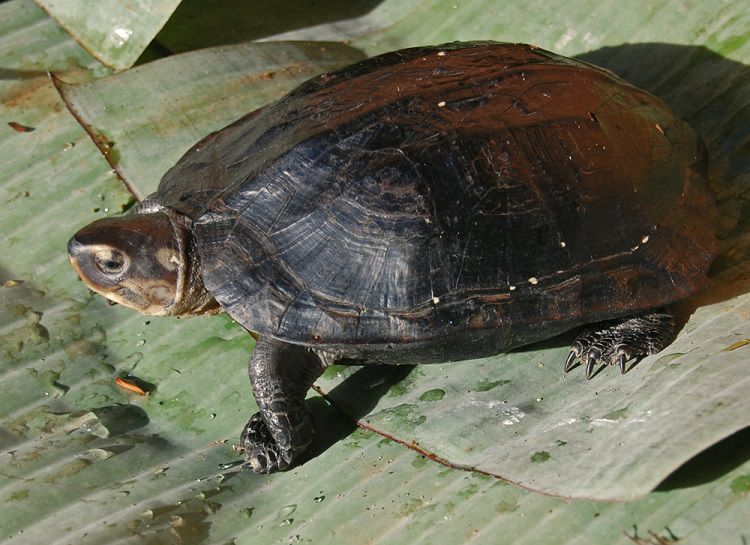
Smiling Terrapin
Initial signs of a respiratory infection include bubbles or mucus coming from the nostrils or eyes. As the infection progresses, the terrapin might begin floating sideways in the water, a phenomenon known as ‘listing.’ When terrapins do have a respiratory infection, fluid collects in the lungs, typically affecting their ability to submerge. This then leads them to becoming extremely lethargic and ill. As increasingly more fluid collects in the lungs, the terrapin may start to gasp for air.
A terrapin with a respiratory infection will require attention from an exotic animal vet. It will likely be the case that yours requires an antibiotic, and you might also be advised of certain steps you can take to increase the chances of the terrapin’s recovery. This could include removing it from its usual tank, especially if you have more than one terrapin. A smaller tank will make it easier for you to control the temperature and to keep the water clean. It is important to keep the water temperature at around 85F while the basking area should be between 90F and 95F. Ensure that the temperature of the room the tank is placed in is also warm and that there are no cold drafts blowing through.
Why is My Terrapin Not Moving?
Those new to terrapin husbandry may also become concerned if they notice one of theirs is not moving. This is a common issue with terrapins and is usually caused by the temperature of the water or basking area being too hot or too cold. Temperature is crucial for the movement of these cold-blooded creatures.
As these creatures are unable to generate body heat, they require specific temperatures in their water and their basking areas. If the water temperature is either too warm or too cold, it is likely that your terrapin will stay on its basking area, and vice versa.
Check the temperature of the water and basking areas and as mentioned above, make sure the temperature of the room is warm and free from cold drafts.
Unfortunately, if it is not moving then it could also be the case that it has died. Oftentimes, terrapins purchased from pet stores are already ill and those new to owing these creatures do not notice as the signs can initially be very subtle.
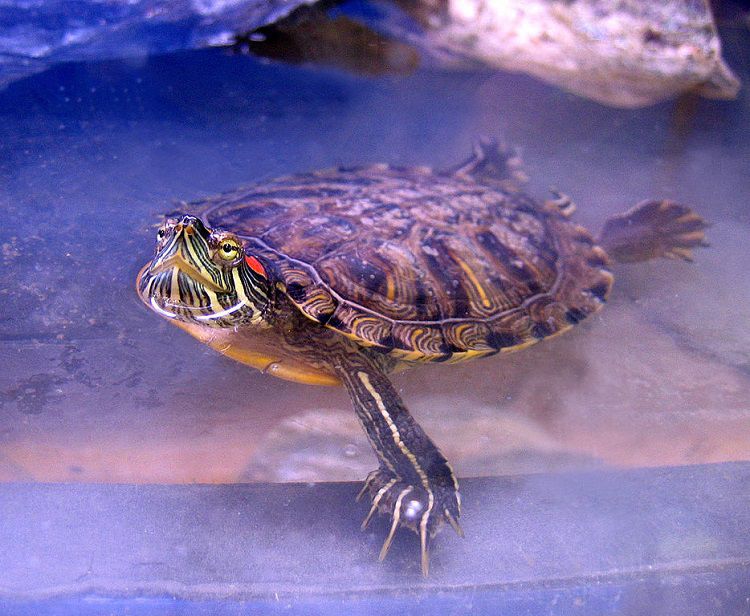
How Do I Know If My Terrapin is Dying?
A dying terrapin may not be easily identified, as respiratory illnesses can progress rapidly. Look for early signs of infection in the terrapin such as bubbles or mucus from the nostrils and eyes. Other signs include lack of movement, loss of appetite, weight loss, lethargy, skin problems, and floating.
If you are at all concerned that your terrapin is ill, seek advice from an experienced exotic vet. If you seek medical attention as early as possible, there may be a chance to save the terrapin.
It is difficult to tell when a terrapin is dead as its eyes will usually remain open, but it will feel limp to the touch. A dead terrapin will also feel warm to the touch instead of cold. The head as well as all four legs will also typically be outside the shell.
Conclusion
Terrapins can become ill when the conditions in which they are kept are less than ideal. So we reiterate once more: it is crucial to ensure that the terrapin’s water and basking area temperatures are not too hot and not too cold.
Learn all you can about feeding the terrapin the correct foods as a varied diet is important. You will also need to ensure that the terrapin is getting adequate amounts of UV light from a heat lamp, which you can buy online or from a local pet store. Click here
the correct foods as a varied diet is important. You will also need to ensure that the terrapin is getting adequate amounts of UV light from a heat lamp, which you can buy online or from a local pet store. Click here for a selection on Amazon.
for a selection on Amazon.
Be aware though that terrapins can become ill even when you are doing everything right. As mentioned, some are already ill at the time of purchase, in which case there is nothing you can do (don’t forget that it is quite difficult to spot the early signs of illness). All you can do is provide the ideal environment in terms of temperature, lighting, and diet and be as vigilant as you can. This should allow you to intervene early if illness is suspected.
Photo Credits:
- Featured Image (Indian Pond Terrapin): Rasikamt – This file is licensed under the Creative Commons
 Attribution-Share Alike 4.0 International
Attribution-Share Alike 4.0 International license.
license. - Diamondback Terrapin: Ryan Hagerty – public domain
- Yellow-Bellied Slider: John J. Mosesso, NBII – http://images.nbii.gov/details.php?id=19079&cat=Reptiles – public domain
- Smiling Terrapin: Wibowo Djatmiko (Wie146
 ) – This file is licensed under the Creative Commons
) – This file is licensed under the Creative Commons Attribution-Share Alike 3.0 Unported
Attribution-Share Alike 3.0 Unported , 2.5 Generic
, 2.5 Generic , 2.0 Generic
, 2.0 Generic and 1.0 Generic
and 1.0 Generic license.
license. - Red-Eared Slider: Monika Korzeniec
 – This file is licensed under the Creative Commons
– This file is licensed under the Creative Commons Attribution-Share Alike 3.0 Unported
Attribution-Share Alike 3.0 Unported license.
license.

